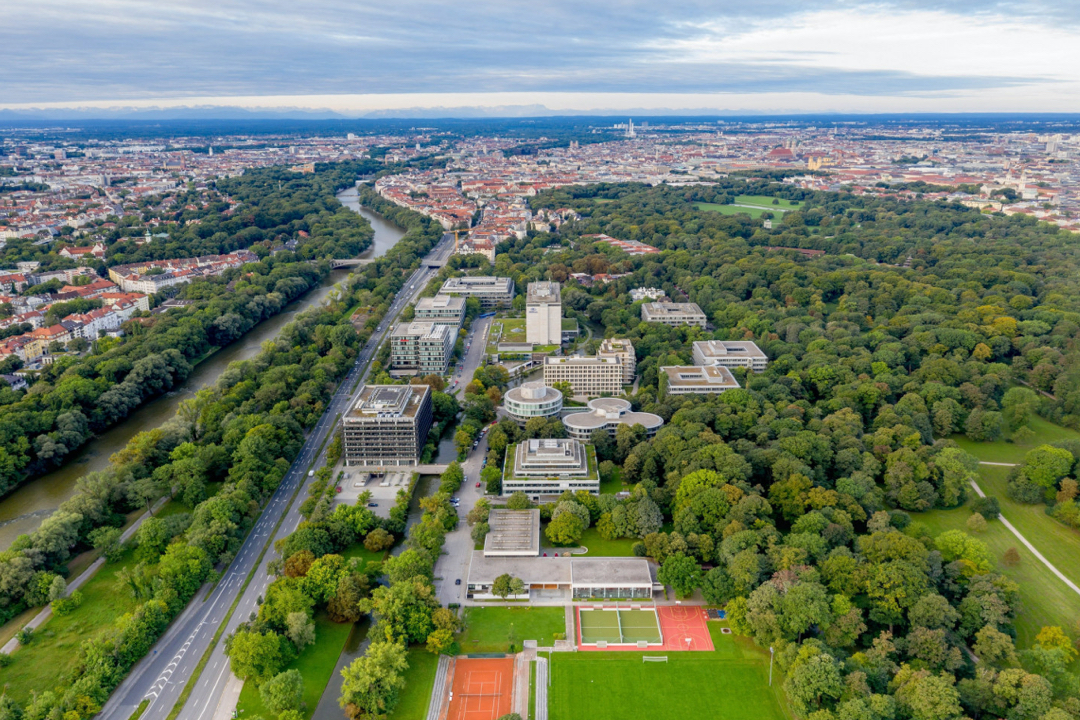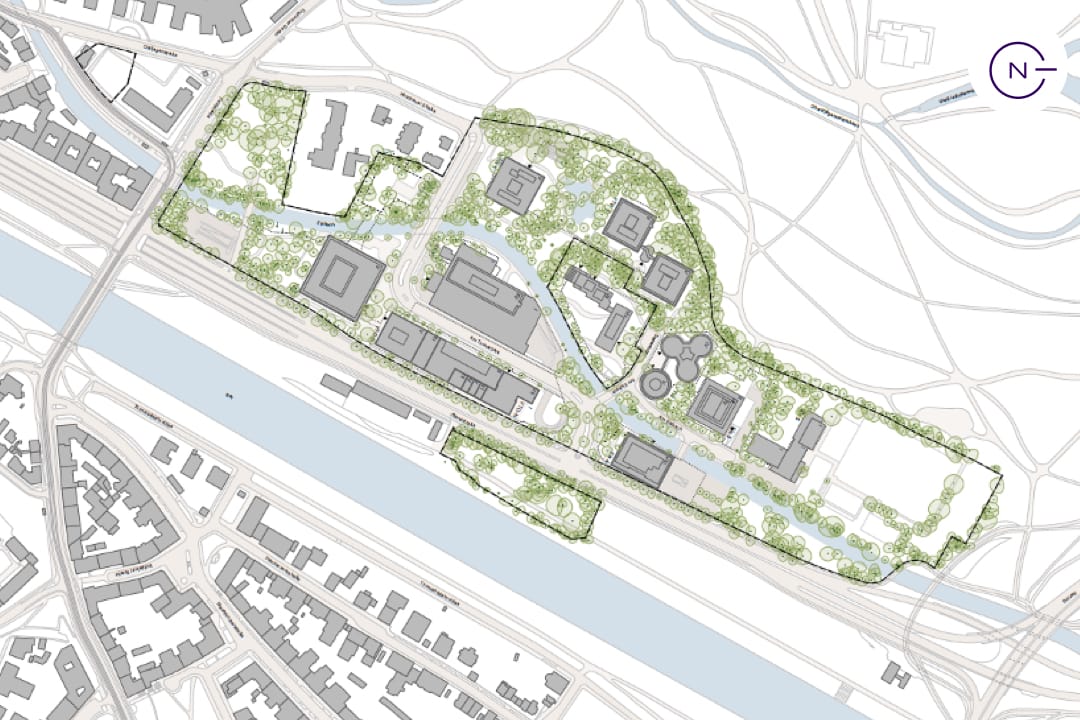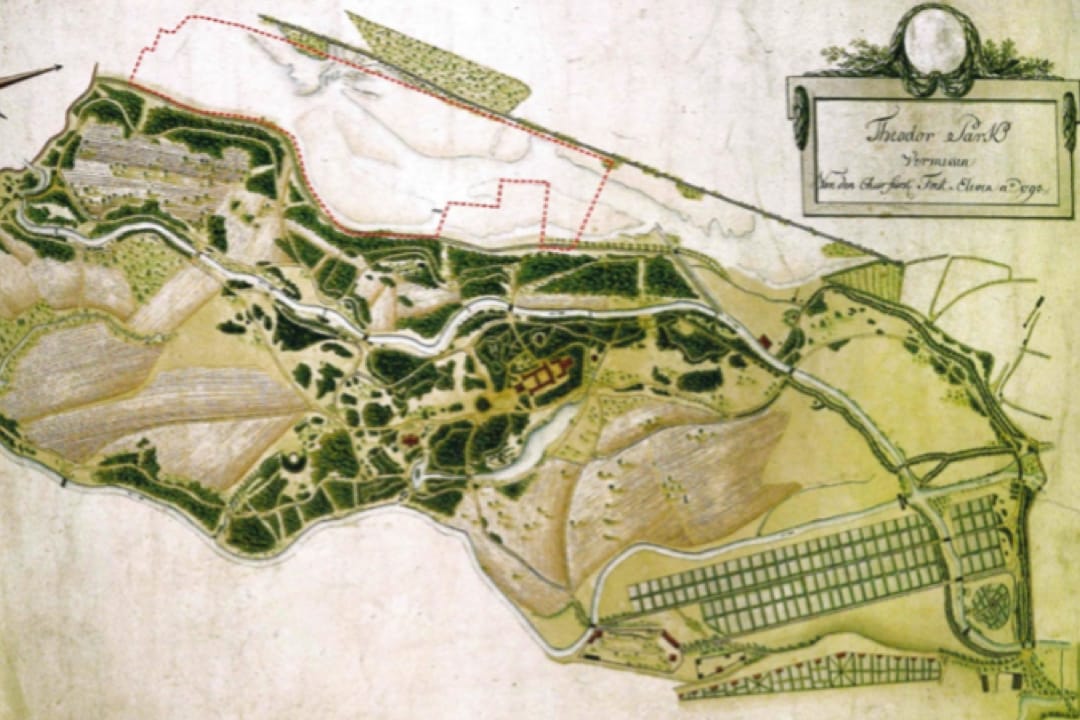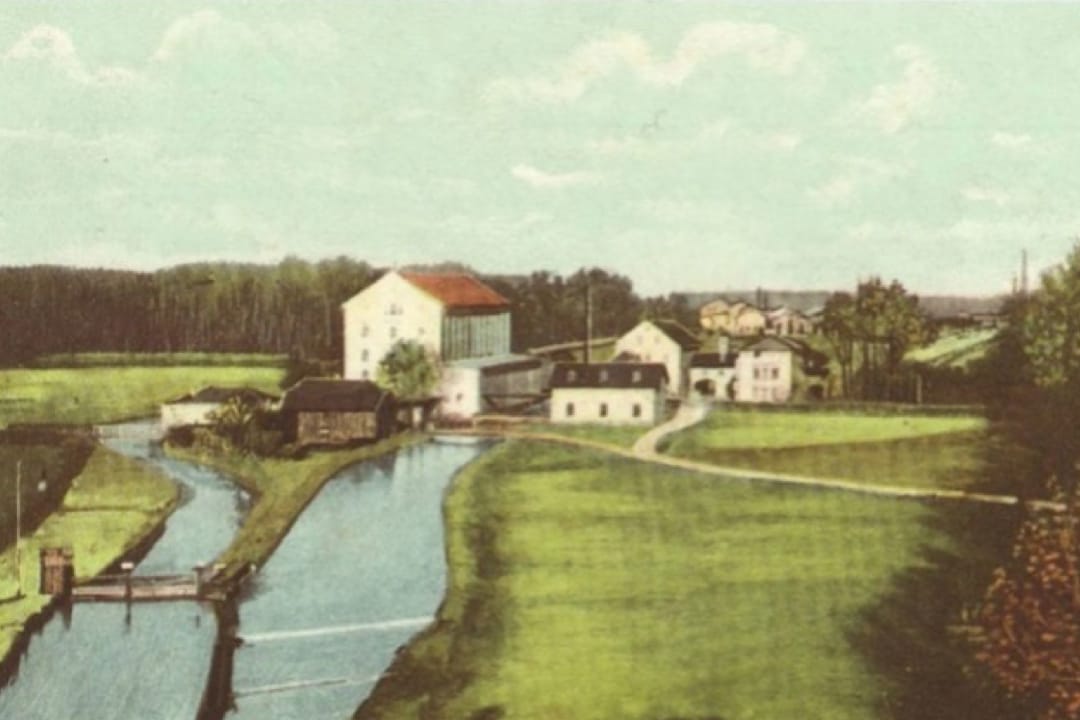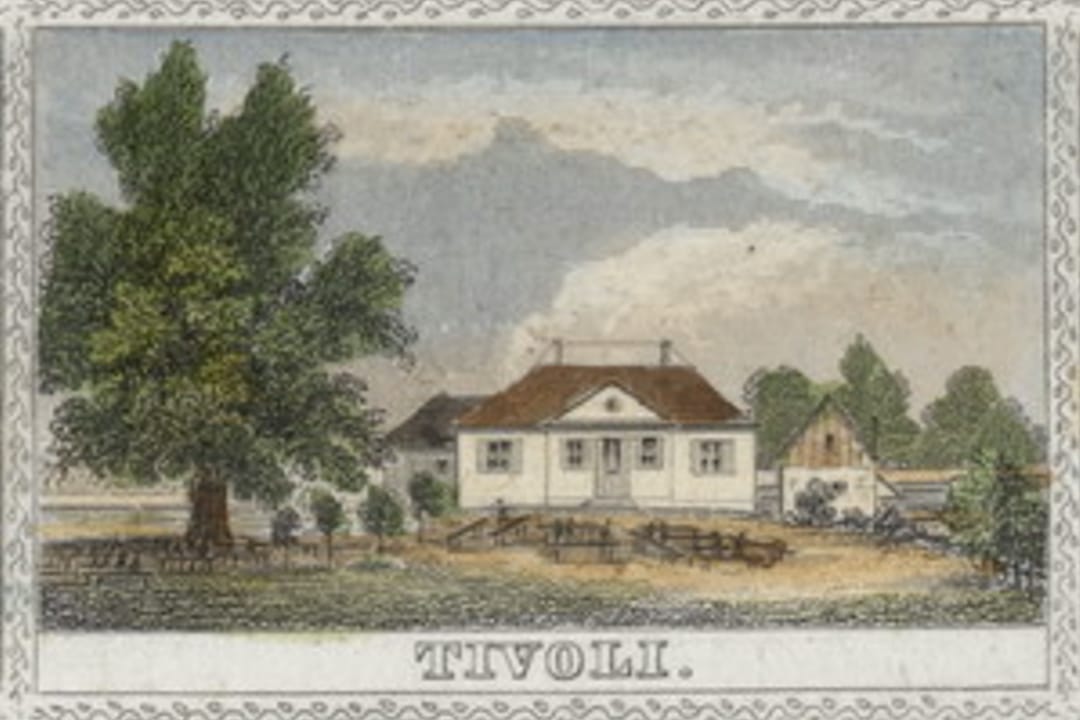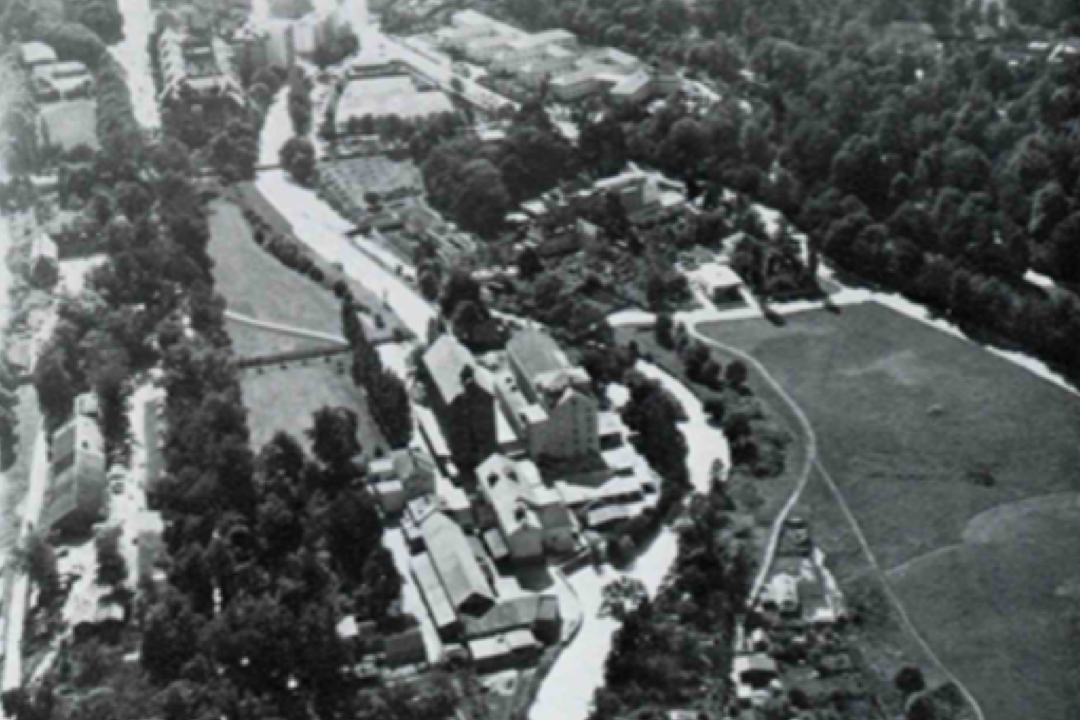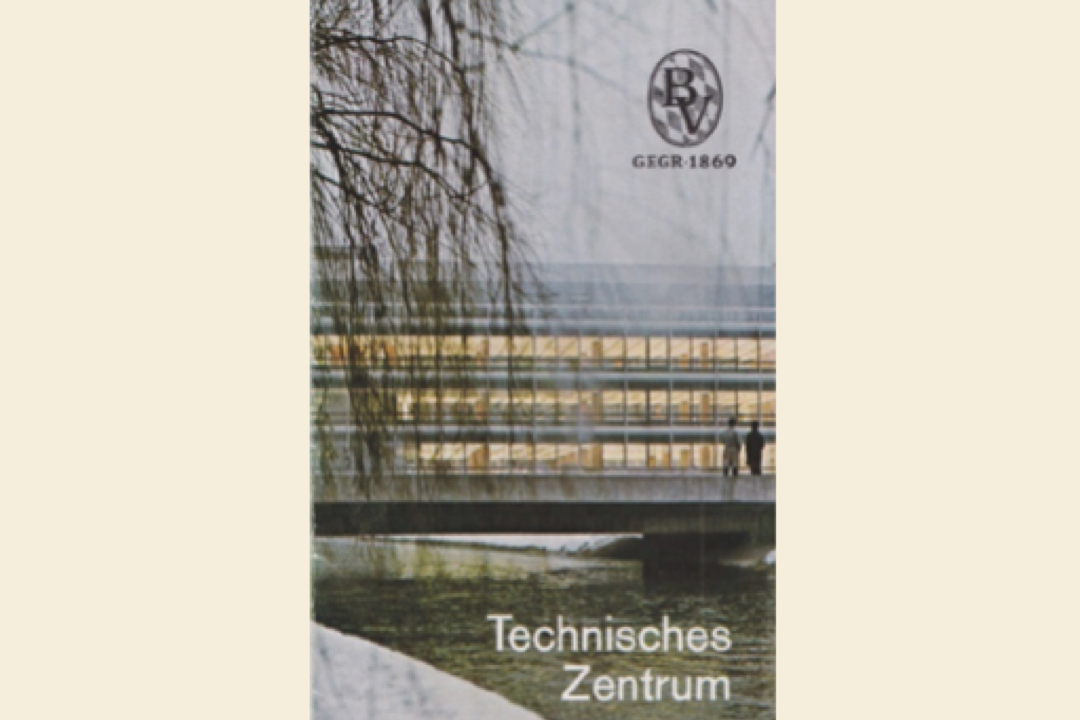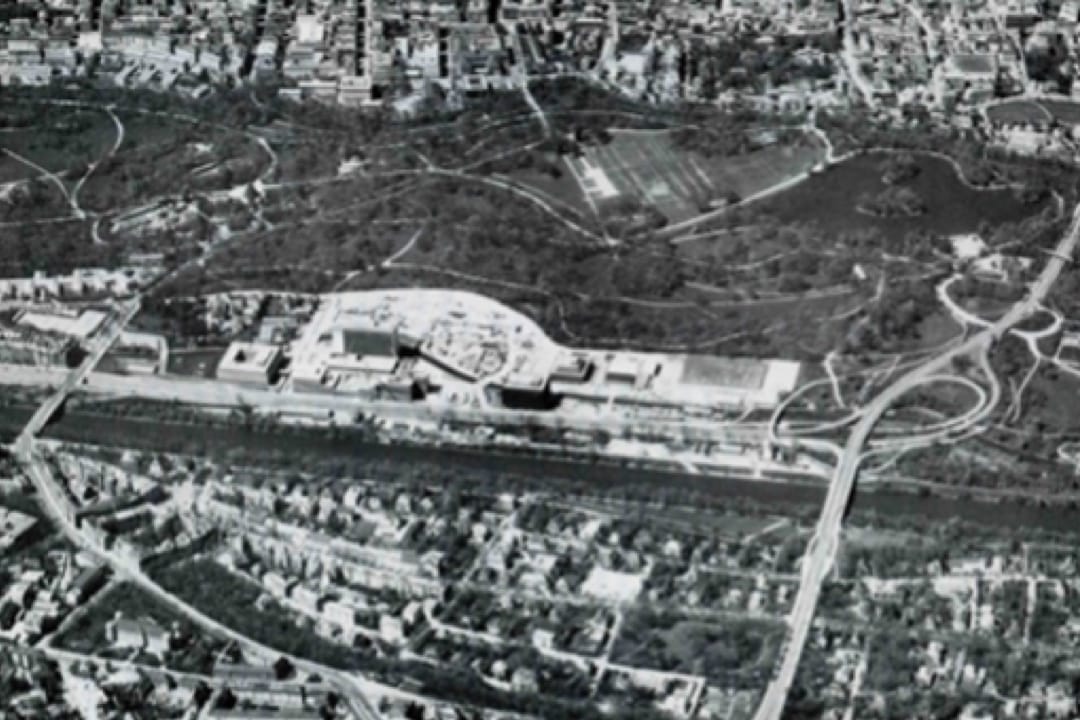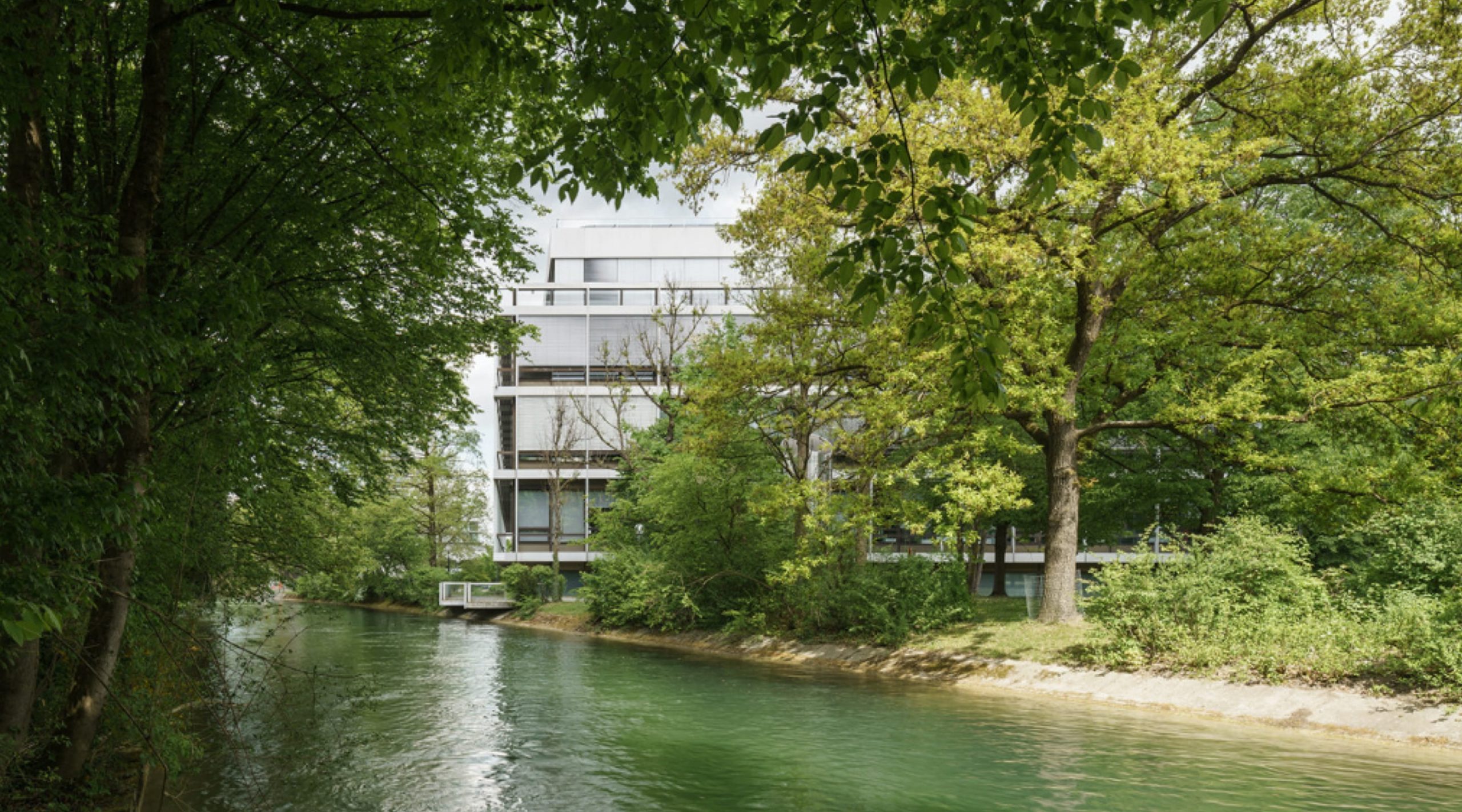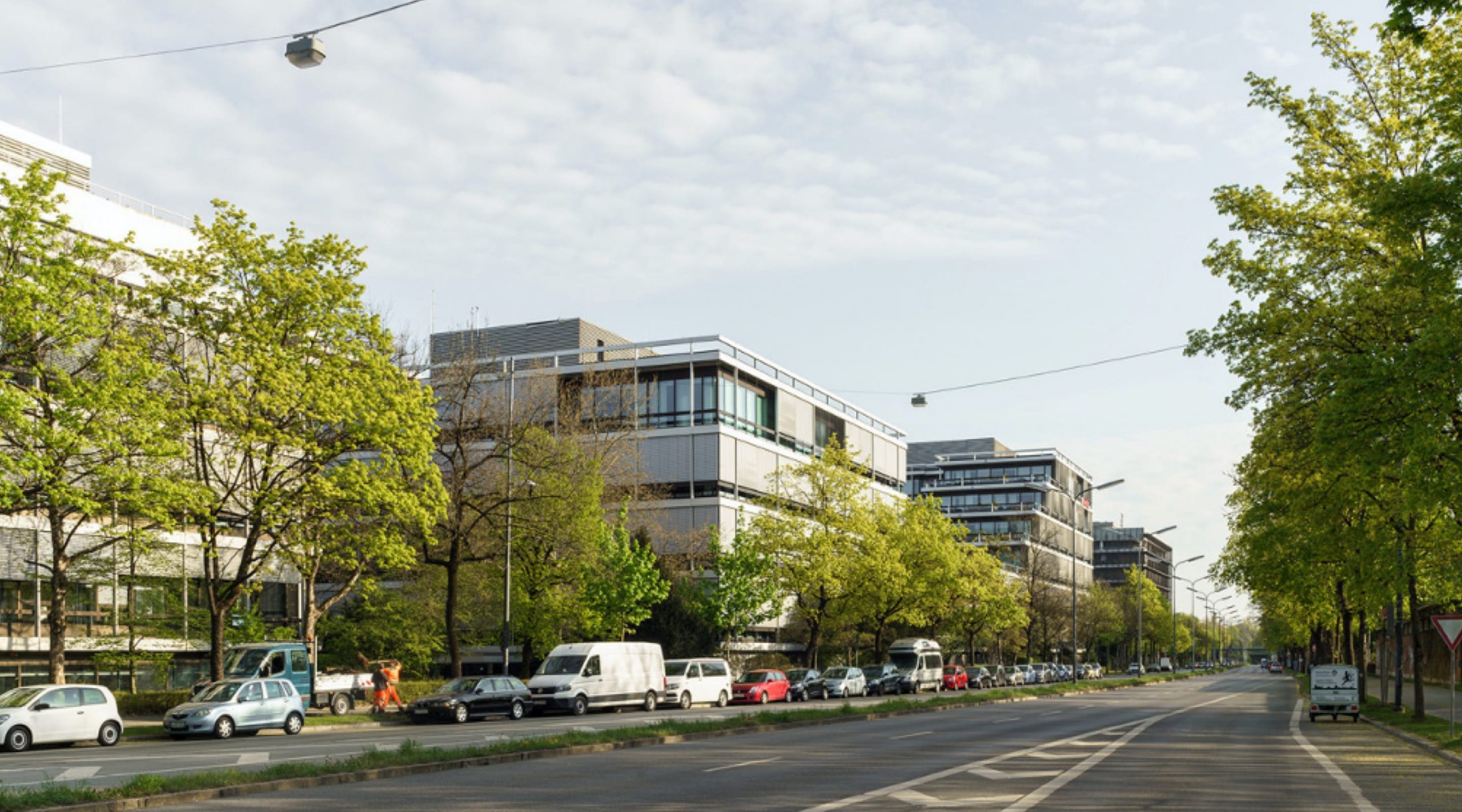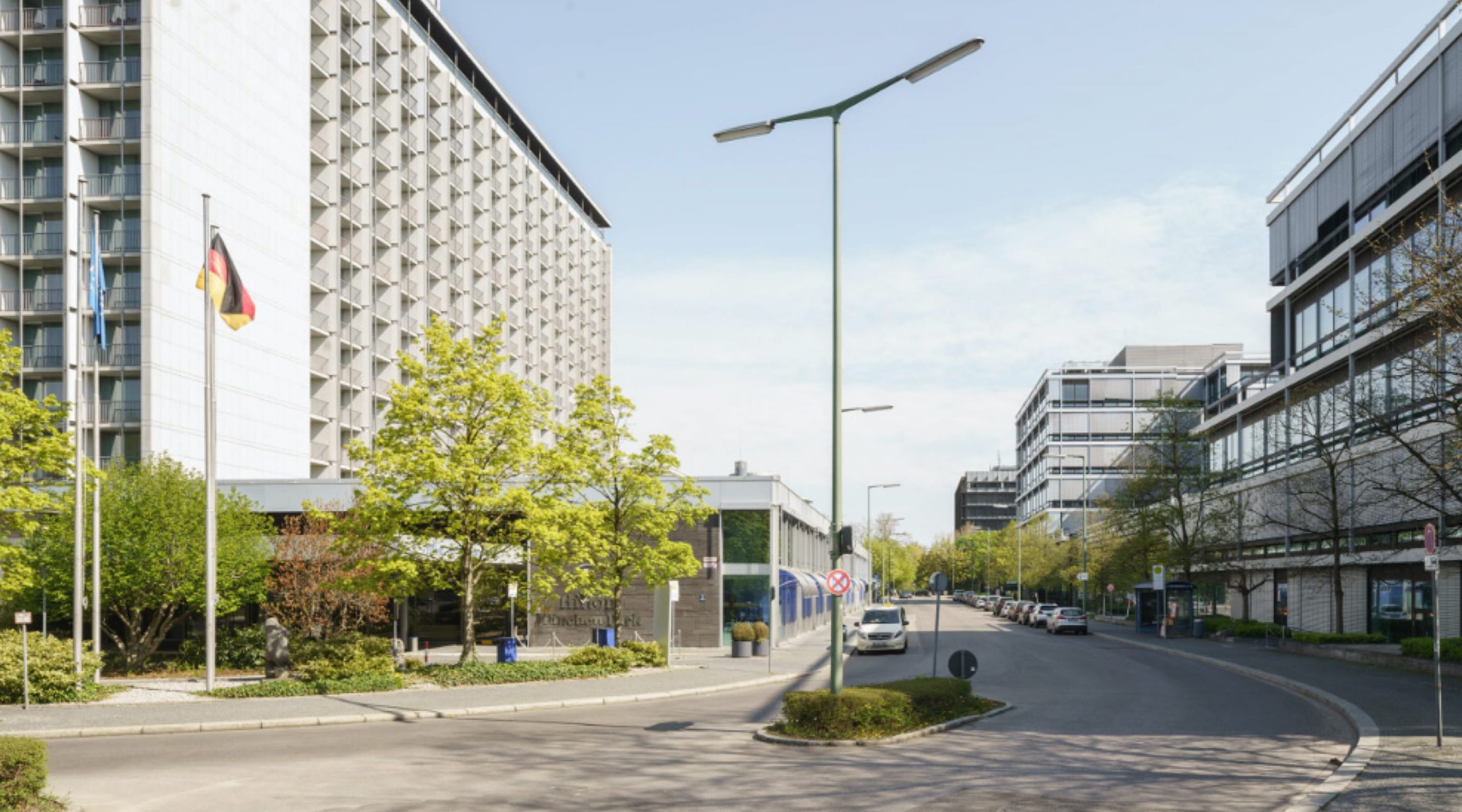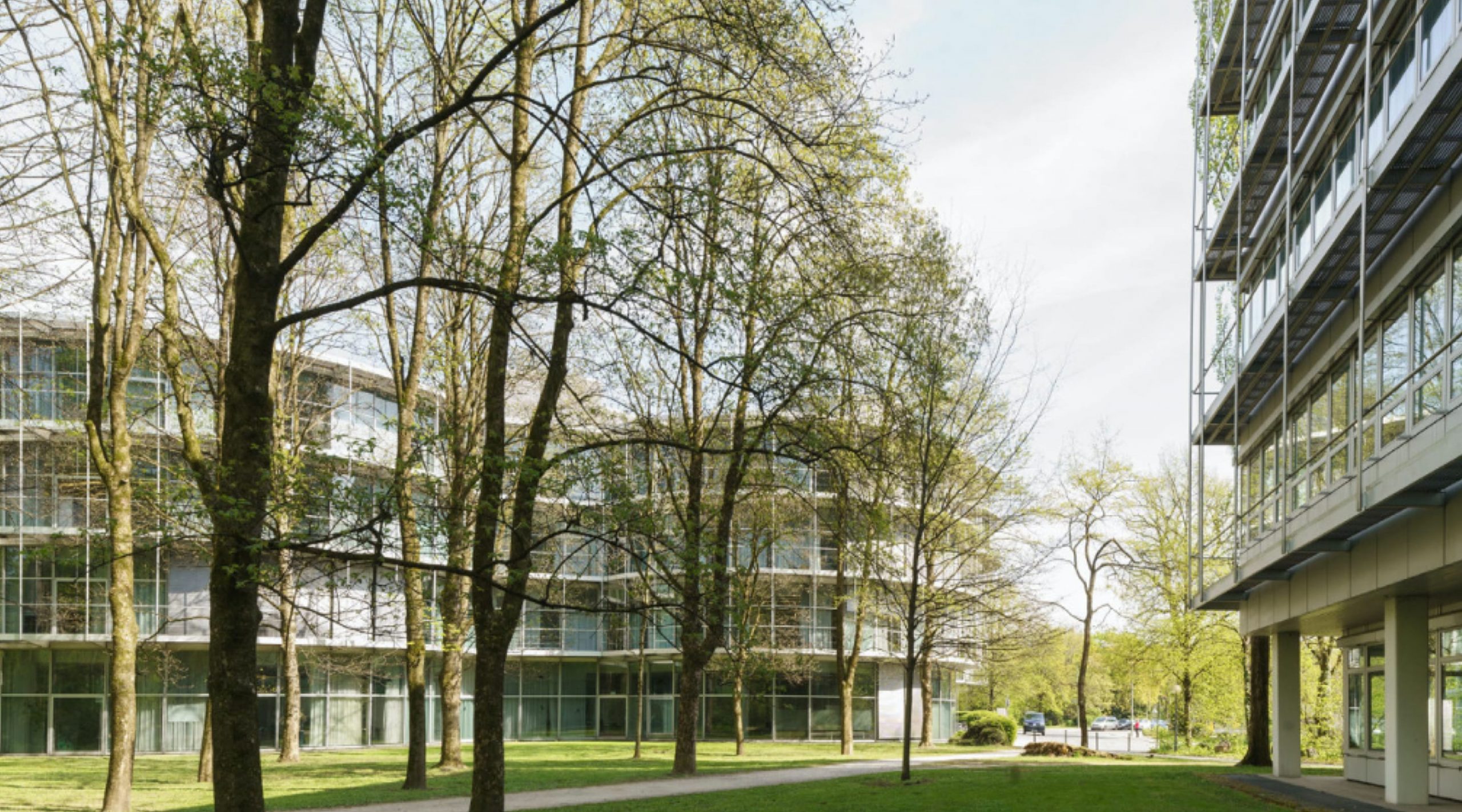TUCHERPARK OVERVIEW
CIRCULAR CITY TUCHERPARK
Welcome to the Tucherpark project website. Here, you will find all the key information about the project.
To help with any questions or comments there is a dedicated FAQ section at the bottom of each page and a contact section for direct communications..
The development of Tucherpark
represents a new chapter in the history of this neighbourhood. Our aim is to breathe new life into this island in the heart of Munich, with its green spaces and striking architecture. And we want to take you with us on this journey.
In Tucherpark, we want to create a space to live, work and play. We have called our vision Circular City. With this, we are applying a holistic approach to urban planning. This means that existing buildings, paths and green spaces are being developed sustainably and new structures are being created with a view toward caring for the environment and future generations.
The site of the former car-friendly office development, for example, will be used to provide much needed housing for all income groups. These flats are expected to be offered as rentals. We hope to keep the hotel, and create a greater variety of office spaces. We want to welcome new residents from retail and gastronomy, and create culture and leisure activities for everyone in Munich. And – of course – Tucherpark wouldn’t be Tucherpark without its expansive green spaces.
We want you to be a part of the development of Circular City Tucherpark from the very beginning. This website will give you a first glimpse of what we’re planning to do.
We at Hines and Commerz Real have years of experience in Munich and strong partners to back us up. We are particularly keen to develop Tucherpark together with the city’s residents and to open it up to a wider public.
Please do not hesitate to contact us at any time with questions or suggestions.

Alexander Moell
Managing Director, Hines Deutschland
Henning Koch
CEO, Commerz RealA rediscovered neighbourhood for Munich
Today, Tucherpark is an island in the middle of the city, and yet it is unfamiliar to many residents. We want to change this by opening up and breathing new life into the area.
We envisage it having a wide range of uses in future:
Current impressions
A look at Tucherpark today shows an area full of contradictions. On one hand, the magnificent buildings, works of art and valuable trees and green spaces make it a hidden gem. On the other hand, it suffers from a string of flaws, such as the oversized streets and car parks, the uninviting ground floor area, the mono-structure and the way it is partitioned off from the surrounding neighbourhoods. This is why we want to develop the existing stock with caution, in order to enhance its best qualities and find contemporary solutions to its weaknesses.
